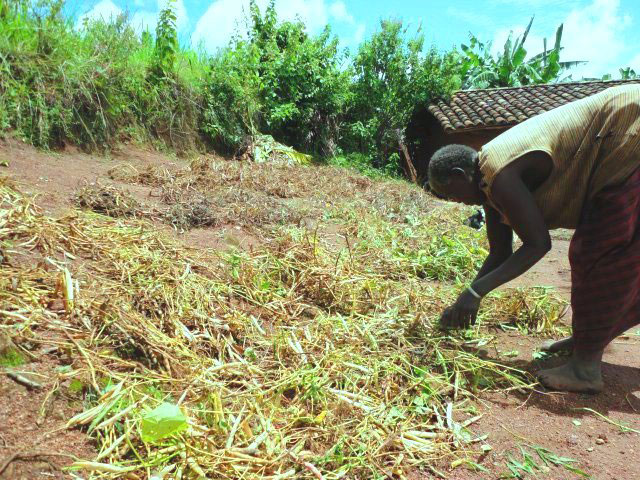
Rains have been persistent from April through May which farmers fear will affect harvests
Jerome Munyangondo a model farmer in Kirehe district, Eastern Rwanda, grew beans on 3 hectares of land during the farming season B.
He expected his plantation to receive persistent rain throughout the month of April and May. He is a lucky man because the rain has been indeed regular.
However, the deadly army worm disease has affected crops especially maize in almost every corner of the country.
For beans, Munyangondo said, “They normally die away due to prolonged rain during the month of April. I have already projected my seasonal harvest,” he said.
He expects to harvest more than 5 tons of beans from his farm – thanks to this year’s rain pattern. “Normally, I used to incur losses ranging from 1 to 2 tons due to heavy rains in April that killed crops especially beans,” he said.
His expectations are shared by many other farmers.
John Karakire, another farmer growing soya bean in Nyagatare district said the April heavy rain has affected his harvest. “Too much rain makes crops suffocate especially those nearing harvest. But this season looks promising,” he said.
The recent prolonged heavy rainfall has caused numerous problems for farmers – wiping away hundreds of hectares of crops in the country side.
According to officials at Rwanda Agriculture Board, when the soils get wet due to much rain, there is no air left in there, and, literally, the plants begin to suffocate especially the ones that are not completely underwater.
On top of destroyed crops due to heavy rains, lives and properties have been affected due to prolonged rain especially during April and early May in Rwanda.
For example, on May 10 last year, countless hectares of crops and properties were destroyed in Northern part of the country – leaving at least 30 people dead.
The national risk atlas released in 2015 estimated that Rwanda’s main climate change hazards including; drought, landslides, floods, earthquake and windstorms; can inflict a combined economic loss of $132,232,970 compared to $120 million government allocated to agriculture sector in the 2014/2015 budget, in case they occurred.
For this year, rain pattern has been minimal compared to previous years. Officials at Rwanda National Meteorology Agency say the new rain pattern is no surprise, but a clear effect of climate change. They alert farmers to expect more strange rain patterns in a near future.
“Climate change has greatly affected seasons. The ozone layer has been attacked all over the world and farmers should expect this trend in many more years to come,” Anthony Twahirwa – head of Rwanda Meteorology Agency told KT Press early this month.
In the last 2 months, government and the army had to deal with the ‘Fall Army Worm’ – a deadly insect that hit maize crops in almost every corner of the country – that affected an estimated 15,699 hectares of farmland (a quarter of the country’s total area of 63,499 hectares planted with maize).
With the pests contained now, Agriculture Minister, Geraldine Mukeshimana says climate change issues remain a daily assignment to work on. With the last month rain changes, Mukeshimana told KT Press the ministry was well prepared for the changes and this did not come as a ‘surprise’.
“Coping with climate change has now become a daily challenge that the sector is to deal with. Nothing surprising with the past month,” she told KT Press during a twitter session dubbed #AskMinagri.

